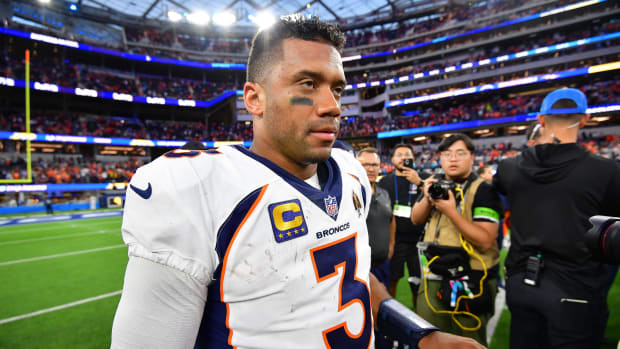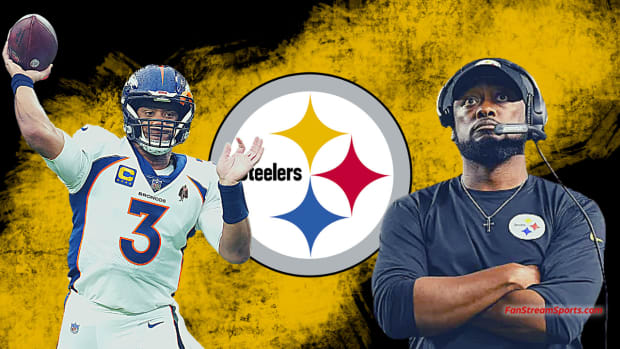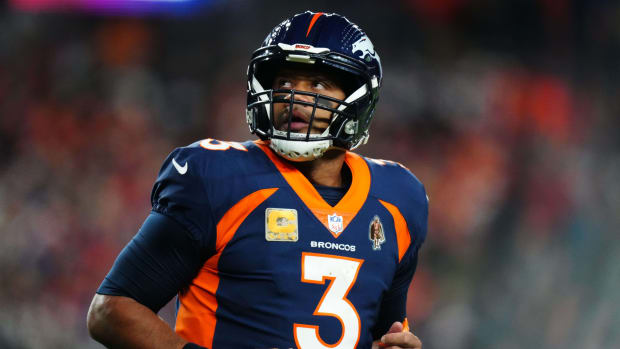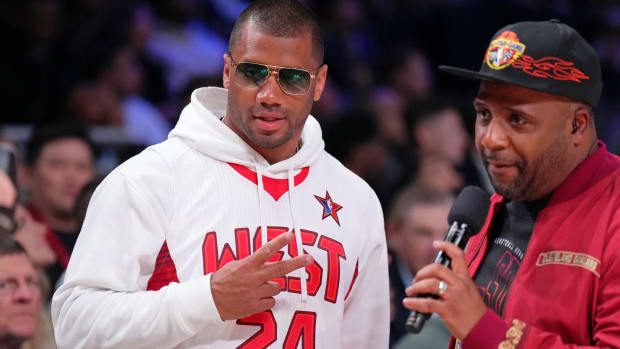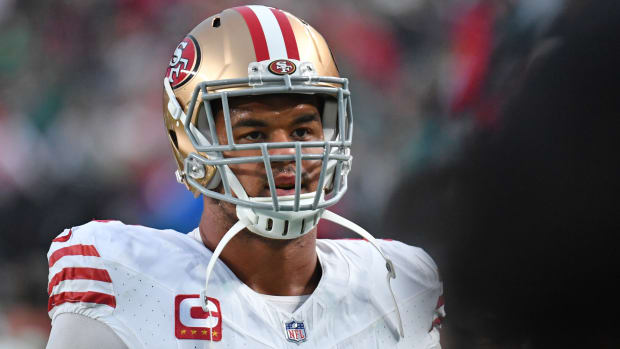The NFL’s Top 10 Safeties | The MMQB NFL Podcast
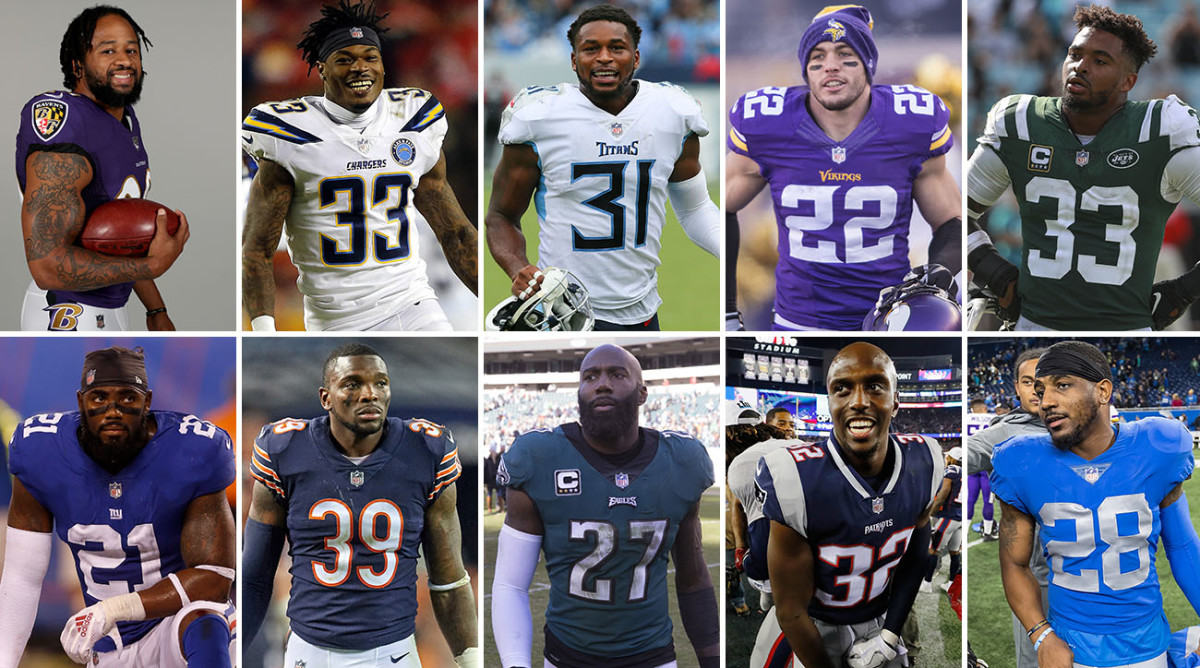
On the Monday Morning NFL Podcast, Andy Benoit and Gary Gramling discuss safeties across the NFL, why the market for them changed radically this offseason, what Eric Weddle allows the Rams to do, and the advantages of three- and four-safety packages. Plus, they unveil their ranking of the top 10 safeties in the NFL heading into the 2019 season. Listen and subscribe to The MMQB Monday Morning NFL Podcast here. The following transcript has been edited and condensed for clarity.
GARY: It’s the penultimate show in this year's position rankings series, and we're talking safeties.
ANDY: An increasingly important position, and we've said that for a few years. The first topic we're diving into is why the NFL completely disagreed with us last year regarding the value of the safeties, and why they overwhelmingly agreed with us this year.
GARY: League-wide, everyone's listening to this show and they are doing what we demand. But that was the conversation a year ago; it took a couple of guys a long time to get contracts, and we wondered why teams are not paying safeties. And now this offseason, you had yet Landon Collins, Earl Thomas Lamarcus Joyner, Adrian Amos, Tyrann Mathieu, Ha Ha Clinton-Dix… So now the question is: Why are safeties being paid such an exorbitant amount of money.
ANDY: I had a conversation with Kenny Vaccaro at Titans minicamp, and he said kind of offhandedly I wish I'd become a free agent this year instead of last year. Those poor guys that signed last year, it worked out O.K. Vaccaro wound up getting a long-term deal with the Titans eventually. But I don't think we've ever seen one position's value jump as high as safeties did from 2018 to 2019. And I think it's just a market correction. It was bizarrely wrong, and the 2018 guys got undervalued. Eric Reid was one of them, too. And now that now it's been corrected.
Subscribe to get all new episodes of The MMQB Podcast for free. The Monday Morning NFL Podcast is available to subscribers the moment you wake up every Monday morning. (For non-subscribers, there is typically a soul-crushing lag.)
GARY: We talked about it last year, all these teams using three-safety alignments. Let's discuss that again. Was there any sort of change around the league that more teams are going with three safety sub packages is this a it's just a trend playing into it. I've wondered about that a little bit because if there are more safeties on the field then there's a bigger demand for the position.
ANDY: Adrian Phillips, to me, is a good example. He's on a one-year deal and he just signed that deal this year. He's a dime safety for the Chargers, so he plays linebacker in their dime package. He's a good litmus test because he's the quintessential dime safety. I thought his contract would be a lot more valuable than it was. He's on a one-year prove-it deal, basically. So the Adrian Phillipses of the world, those guys are not seeing the benefit yet. It's the top-end safeties, it's the starters, it's the Pro Bowl-caliber guys like your Earl Thomas or your Landon Collins. And maybe now we're getting into the economics—I don't know how that works—but maybe it's just a delay in the market correction. Because Adrian Phillips should be getting paid more than $2 million based on the contracts of other recently signed safeties.
GARY: What's the advantage of three safeties as opposed to the traditional sub package, a bunch of cornerbacks out there.
ANDY: Basically, in the simplest terms, cornerbacks are not good enough run-support players and linebackers are not good enough coverage players. As a defense you have to figure out, What do we do with that third option, whether it’s a receiver or it is the tight end. How are we covering these guys inside? We don't have linebackers that can cover and if we put a corner on them we are going to get the ball run on us. So the safety is just a happy medium. Minkah Fitzpatrick, for example, plays safety in a lot of the Dolphins’ packages but he plays slot corner in some of their other packages. They call that a big nickel package where your safety is the No. 3 cornerback, and that's a nice happy medium for the Dolphins and that's an important tactic when they play a team like New England that can run and throw the ball out of two-tight end sets. The Vikings are doing that as well with Jayron Kearse, he was their big nickel cornerback last year but Mackensie Alexander is a little corner. He's their passing-down nickelback. So it's just about schematic versatility, and I don't think this three-safety thing is going away, Gary, because it gives you too many answers. Sometimes you're playing four safeties because you get the third safety playing corner, and then you can get the fourth safety at linebacker. We saw the Chargers in the playoffs at Baltimore last year, they really exhibited the value of more speed on the field. It's a speed game now. Against these spread formations, especially, you need linebackers who can run, and typically safeties run better than linebackers.
GARY: And this all trends toward position-less football. That's what's gaining more and more traction around the league. In the lead up to the draft, you had the Patriots linked consistently to Joejuan Williams, who they eventually took in the second round. He was the 6-foot-4 Vanderbilt cornerback. And Bill Belichick made the point a couple of times during draft season: You've got all these big, fast receivers and big, fast tight ends coming into the league. Who are you going to guard them with? A guy like Williams is your answer. I think they’re still listing him as a cornerback, but it's pretty clear he's going to play some sort of some sort of nontraditional hybrid type of role for them.
ANDY: Absolutely. I feel like we reference that Gronkowski story from three years ago every show—I need to move on, or at least write another good story at some point—but when I did that story Belichick made the point that they view tight ends in New England almost strictly as wide receivers. So they're taking corners, or long-body defensive backs, with the idea of who matches to the tight end. And Patrick Chung's a big part of what they do, and in the Super Bowl they moved a corner, Jonathan Jones, to safety, so it can go both ways. But they're very flexible in New England—the Patriots are a good example because they’re setting the market for how the safety position is going to be utilized across the league. Two keys are versatility and man-coverage ability.
ANDY: You know, Gary, let's take it a step deeper. Of course, you want more speed on the field so you replace a linebacker with a safety, but you have to understand the way offenses are attacking defenses now too. We talk about Cover-3 a lot on this show, and all these Over routes that you get against Cover-3 (the inside slot receiver runs deep and diagonal across the field). And the only guy left the guard him in Cover-3, per the rules of that coverage, is the backside linebacker, so you get a wide receiver on a linebacker. The Chargers made that point when they went to those seven-defensive back packages against the Ravens. And think about that for a minute: They're playing a run-based offense and they decide to go with more safeties rather than linebackers. They did that in part because the Ravens kill you with Over routes. The Chargers thought, If we can take that away then not only do we have the speed on the field to handle Lamar Jackson in that running game, but we also eliminate a lot of the foundation of their passing game. Defenses get exploited by design—that's what offense do, they sit around and scheme ways to beat defenses. The defense can't just change the scheme, and the schemes are usually sound. But you can change the personnel that executes the scheme.
THE MMQB PODCAST TOP 10 SAFETIES FOR 2019
“Others receiving votes” is included if you listen to the show, along with more discussions on safeties including the bizarre shift in the safety market, the Rams with Eric Weddle, and much more. Position ranking voting is AP Poll-style among three panelists, with Andy’s votes counting double:
1. Kevin Byard, Tennessee, 78 points (1 first-place vote)
2. Earl Thomas, Baltimore, 76 (1 first-place vote)
3. Harrison Smith, Minnesota, 74 (1 first-place vote)
4. Derwin James, L.A. Chargers, 65
5. Jamal Adams, N.Y. Jets, 62
6. Devin McCourty, New England, 53
7. Quandre Diggs, Detroit, 51
(tie)8. Eddie Jackson, Chicago, 50
(tie)8. Malcolm Jenkins, Philadelphia, 50
10. Landon Collins, Washington, 47
• Question or comment? Email us at talkback@themmqb.com.

































